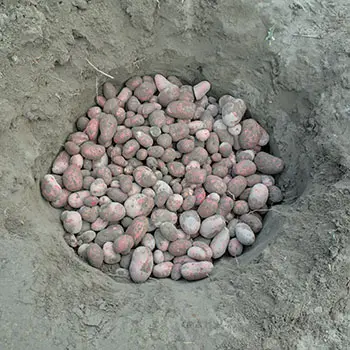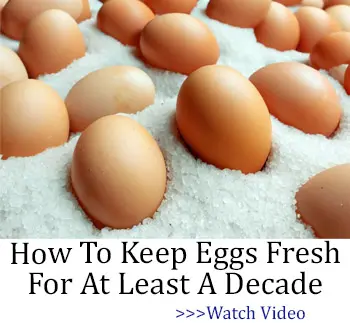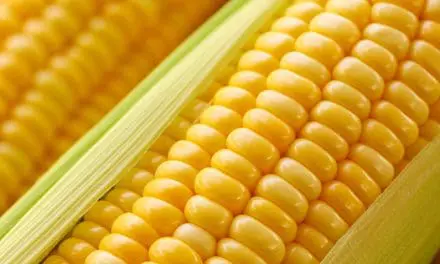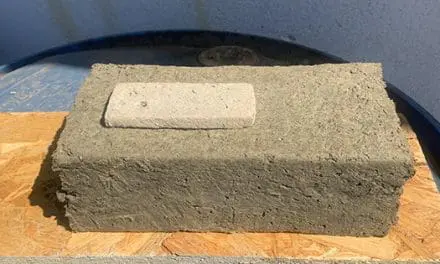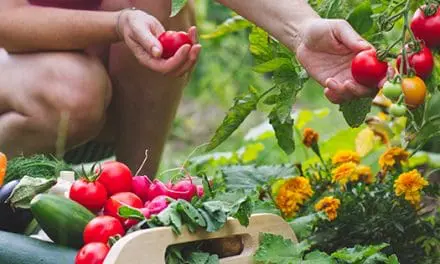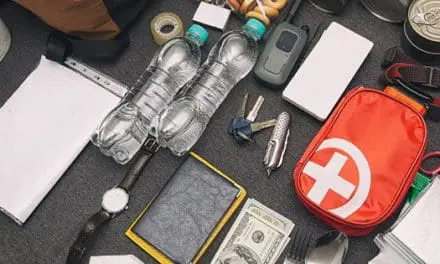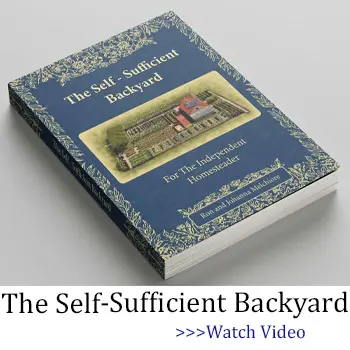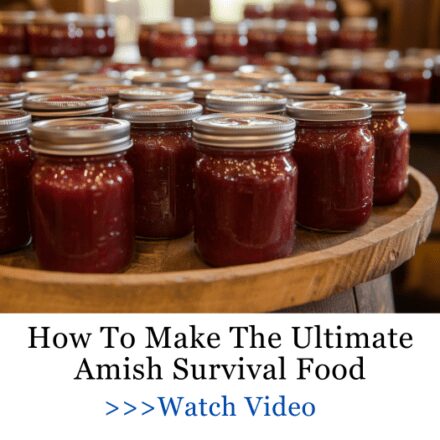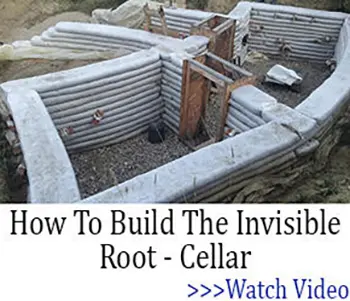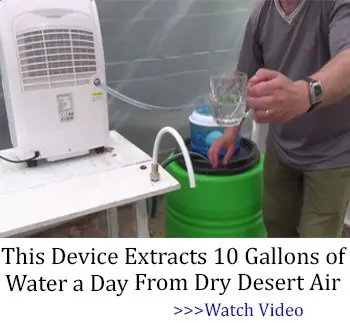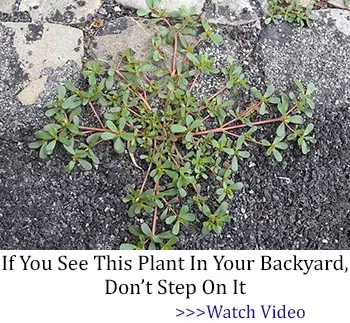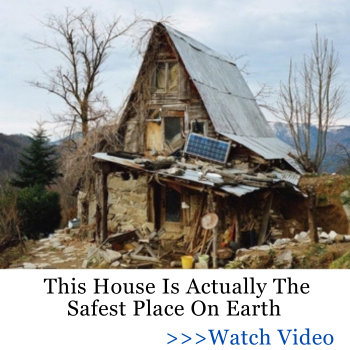Three generations of my family have used the same backyard storage pit. My grandfather dug it by hand in 1962. These were called “root caves” by ancient Scandinavians. This simple, straw-lined hole helps keep our vegetables safe in harsh winters. Do you want to know what foods you should bury in your backyard?
For modern people with small storage and high energy costs, burying food is a practical solution. But not all foods are good for burying. We’ll talk about that later. First, let’s look at the foods you can and should store in your backyard.
Foods You Should Bury In Your Backyard
Root Vegetables 
Storing root vegetables underground is a great way to keep them fresh. For example, potatoes can stay fresh for up to 8 months when stored correctly.
I cover the potatoes with straw and slightly acidic soil. The straw helps control moisture. Sand provides extra insulation. Spacing the potatoes right prevents rot. I learned this from past mistakes.
Carrots need special conditions for storage. The earth, about 4 feet deep, stays at 35-40°F. This is perfect for carrots. Clean sand acts as a moisture barrier. Proper spacing keeps the carrots from touching. After testing different soils and depths, I found this method works every time.
Beets and parsnips can be stored well underground. But you need to plan it well. The soil keeps the temperature stable. I put the veggies in diagonal rows. I add sand barriers to help air flow and avoid direct contact. When buried in sandy soil at the right depth, these veggies stay firm and healthy for months.
While underground storage can be a great way to keep root vegetables fresh, it’s not without its risks. In uncertain times, you can’t always rely on conventional methods.
That’s why learning from those who’ve survived through difficult times, like the Amish, can be incredibly valuable. The Amish Ways Book offers practical survival food tips and preservation techniques that ensure you won’t lose your harvest to spoilage, pests, or changing conditions. If you’re worried about the risks of improper storage, this book can help guide you to a safer, more reliable food storage system.
Tubers and Bulbs 
Storing sweet potatoes underground is an easy way to preserve them long-term. First, cure them at 80-85°F for 10 days. Then, move them to cool, dry conditions.
The Earth’s natural temperature keeps compost undisturbed until you need it. Adding dry sand helps prevent moisture buildup and protects against temperature changes.
Onions need special care to stay fresh. Use chambers made from hardware cloth and straw. This keeps onions off the soil and allows airflow. Proper spacing and moisture control help them last longer.
Garlic can be stored underground easily. Use simple containers like milk crates with hardware cloth. Add a dry straw between the garlic to prevent moisture. This helps the airflow. The steady ground temperature protects the garlic from freezing or sprouting early.
Winter Squash and Pumpkins
Storing winter squash is different from storing root vegetables. In my early attempts, I learned that moisture control is important. Now, I use elevated platforms made of hardware cloth to keep the squash off the soil. This simple change improved the storage results.
Butternut and acorn squash can stay fresh for up to six months. You can keep them in dry straw beds inside underground rooms. The earth protects them from changes in temperature that cause them to rot. It’s important to space them out properly. Even small touches between the squash can make them start to decay.
Hubbard squash can stay fresh longer with some extra care. You can wrap each one in newspaper before storing it. This prevents spoilage and keeps the squashes in great shape.
Hardy Fruits 
Storing fruit underground works best with controlling moisture. For example, apples and pears store well when wrapped in paper and put in closed containers.
The earth’s steady temperature slows the natural ripening without freezing them. Asian pears can be stored very well. They can last up to five months when preserved underground properly.
Traditional fruits like russet apples and bosc pears store better than hybrid fruits. Harvest them when they are fully ripe. Make sure the fruits have no bruises or marks before storing them.
Regular checks are vital. Remove damaged fruit early. This stops spoilage from spreading. Storing fruits in separate chambers prevents ethylene gas. This stops nearby produce from ripening too fast.
Foods You Shouldn’t Bury In Your Backyard
Knowing which foods to avoid can save time and money. Leafy greens like lettuce, spinach, and kale are tricky. Even when wrapped and stored carefully, they quickly become slimy and inedible. Underground storage doesn’t work well for these veggies as they spoil within days.
Soft fruits face major issues. Their high moisture and delicate nature make them vulnerable to mold. Berries, peaches, and plums spoil fast, especially in humid underground spaces. Stone fruits release ethylene gas, which speeds up decay and impacts nearby items.
Related: Why You Should Bury A Trash Can In Your Backyard
Packaged foods can attract pests. Rodents and insects target processed foods, even if they seem long-lasting. Dark, cool areas are perfect for infestations. Over time, metal containers can rust, ruining what’s inside.
Dairy and meats are risky for underground storage. Without cooling, bacteria grow fast. This leads to spoiled food and health issues. Their strong smells attract wildlife. This damages the storage. Even sealed packages fail over time. The moisture and pressure cause problems.
Certain foods like chocolate, oils, and honey can have issues when stored underground. The changes in soil temperature can affect their texture and make them spoil. Condiments and preserves in glass jars can also break from the movement of soil. Above-ground storage is much better for these items.
Storing food underground may seem like a good idea, but it’s important to know what works and what doesn’t. If you’ve ever considered using your backyard as a long-term food storage solution, you’ll need to be prepared. Without the right knowledge, you could end up with spoiled food, damaged cans, or infestations.
This guide teaches you how to create a proper underground storage space that not only protects your food from spoilage but also shields it from disasters like EMPs or radiation. In a crisis, this could make all the difference.
Pros and Cons of Burying Food
Pros 
Underground storage uses the earth’s natural coolness. This keeps steady temperatures without needing electricity. The earth’s natural coolness works better than modern refrigeration during long power outages. For example, last summer, a power outage spoiled my neighbors’ refrigerated foods. But my underground storage kept the food fresh.
This method saves space. Storing food underground frees up room inside your home. You can use this extra space for other things.
The earth naturally provides insulation and moisture control. This means you don’t need expensive equipment or special rooms to keep your food fresh. This makes storing food cost-effectively.
Underground storage is useful. It works well for any size. Even a small backyard can store enough vegetables to feed a family through winter. It’s a simple, reliable way to preserve food long-term.
Cons
Physical labor is a big challenge for underground storage. Digging and keeping storage pits in good condition takes a lot of work, especially in hard soil.
Winter presents another problem. The frozen ground makes it harder to access stored items. This adds extra challenges. Regular maintenance is key to keeping storage areas in good shape year-round.
Pests continue to be an issue. Even with good planning, rodents may sometimes find ways into storage areas. Staying alert is important to keep these pests away.
Moisture can cause big problems. Heavy rain or spring thaws may lead to water leaking in, even if the system is well-made. Adding drainage systems can help, but this makes the setup more complex.
Location can limit underground storage. High water or poor drainage makes this method hard in some areas. Clay soils are very hard to manage, and need extra care. Urban people often face issues like digging rules or not enough space for underground systems.
Foods You Should Bury: How To Safely Store Them Underground
Preparing well helps store food underground successfully. I’ve created a system that works well over time.
Start by picking the right place. Look for soil that drains well on slightly higher ground. This helps avoid water buildup. Partial shade keeps temperatures steady.
To test how well the soil drains, fill a hole with water. If the water goes away in 24 hours, the soil is good to use.
Dig the main pit to a depth of four feet. This depth helps keep the temperatures stable. Make the walls slope outward. This prevents cave-ins. Add a six-inch layer of gravel for drainage. Line the walls with hardware cloth. This keeps pests out.
Related: Ingenious Ways To Keep The Critters Out Of Your Pantry
Use cedar planks for shelves. They don’t rot or have bugs. Install a thermometer and humidity gauge to check the conditions. Make separate areas for different foods to stay organized.
Ventilation is very important. Put PVC pipes with screens on the ends in opposite corners. This lets air move and controls humidity. In extreme weather, partly close the vents. This keeps the conditions steady.
Looking ahead, underground storage is a good way to preserve things. It is reliable during power problems, natural disasters, and other disruptions. Underground storage works well with modern preservation methods. It can keep things safe even when the power goes out or there are other problems.
Why You Should Bury Your Vegetables In Sand
DIY Small Amish Backyard Root Cellar (Video)
How To Store Your Food If You Don’t Have A Lot of Space
Plant This Vegetable Once and Harvest it For 30+ Years
Frugal Lessons From My Grandfather Who Lived Through The Great Depression


